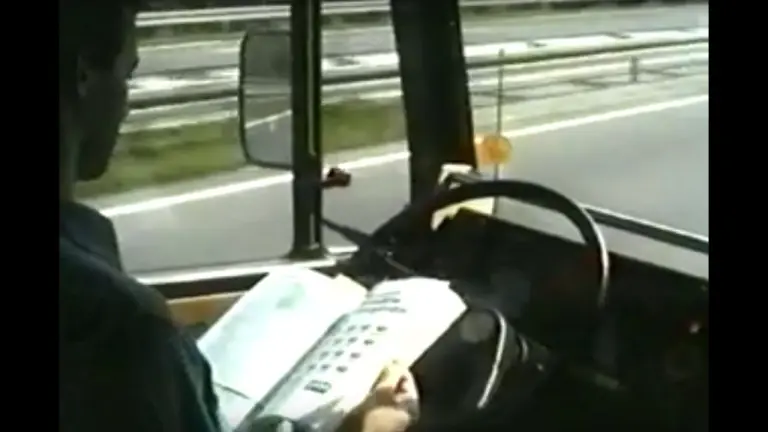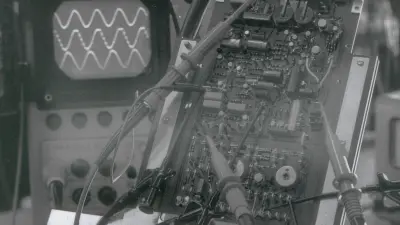Pioneering research on automated driving in the 1990ies
Bosch former project director and contemporary witness Gert Siegle reports

Prof. Dr. Gert Siegle worked at Bosch in leading positions, such as research and advanced engineering. In the early 1990ies, he headed a research project on autonomous driving at Bosch.
Mr. Siegle, what inspired Bosch to start performing research on autonomous driving?
Siegle: The first thing we thought about in the late 1980s and early 1990s when it came to autonomous driving was: “How can we keep the car on the road?” But there were other people working on that. So we focused on things like: “What should the vehicle do at an intersection?”
And what was Bosch’s answer?
Siegle: The overall challenge, to put it briefly, consists of two points:
First, we’ve got image recognition with rapid analysis and reaction to keep you from driving off the road, like the way we see and steer. And second, we’ve got the use of additional knowledge as to approximately where to turn at the next intersection. For that last part, you need positioning and a map – either in the back of your head or in the form of a navigation tool. And when it came to navigation, we were leading the way worldwide. That’s how we came up with the idea of linking the two things.
Did Bosch work with any partners?
Siegle: Yes, with Fraunhofer IITB in Karlsruhe, which we got in touch with through Dr. Otto Holzinger, who was the head of automotive technology advance engineering at Bosch at the time.
The goal of the partnership was to develop something we could demonstrate, a pilot solution for autonomous driving. We didn’t want to tackle the most difficult part right away: city centers, with people pushing strollers and with approaching vehicles. Instead, we focused at first on something that would allow people to make better use of the freeway and that had the potential to make highway freight traffic less expensive and safer.
Were there other projects at Bosch with findings that were of use to you?
Siegle: Bosch was already hard at work on driver assistance and navigation systems at the time and was creating digital maps, for example. In 1989, we built the first few hundred navigation devices at Bosch-Blaupunkt in Hildesheim. We didn’t have GPS yet, though. You still had to manually enter your location into the map on the display. It was a little difficult and stayed that way until GPS become available to all.
The documentary of the 1993 Bosch automated driving project

Loading the video requires your consent. If you agree by clicking on the Play icon, the video will load and data will be transmitted to Google as well as information will be accessed and stored by Google on your device. Google may be able to link these data or information with existing data.
So what are the requirements for the road?
Siegle: Autonomous driving, according to our approach, has to be capable of doing what drivers can do with their sense of sight and thinking: keeping the vehicle on the road and finding a destination that can be reached by road of their own accord. To do so, the vehicle has to be capable of steering electronically, accelerating, shifting gears, and braking when it approaches an obstacle, for example. Electronically controlled steering, especially, wasn’t available in mass-produced vehicles at the time.
How does a vehicle like that navigate?
Siegle: First, it has to electronically recognize the side of the road and the road itself. Then it has to control the steering and take the right turn at the intersection. Challenges beyond these basic functions, such as analyzing road signs or identifying obstacles, were not part of the project. We worked on those things at the same time at the Bosch research institutes in Lonay and Hildesheim, and we found solutions to them.
Did the research vehicle that you ultimately demonstrated on the road in 1993 work without GPS?
Siegle: GPS for civilian use didn’t become available until after the project was over. It makes it possible to locate the vehicle, which is necessary for entering the exact position into the navigation device’s digital map. Back then, we derived the necessary information about the route taken and the direction from the antilock braking systems’ wheel sensor signals.
Autonomous driving probably sounded like a far-off vision of the future for many of your contemporaries in the early 1990s. Who worked with you, and what did you achieve?
Siegle: The Bosch team in Hildesheim — Dr. Zechnall, Classen, Neukirchner, Dr. Mester, and many more —– plus the project group at the Fraunhofer Institute, which was headed by Professor Nagel, all brought their expertise to the table.
However, it was not possible to immediately introduce autonomous driving into mass production for the reasons already mentioned. But our publications helped make our findings the latest in science at the time, and – years later — today’s approaches to creating self-driving cars make use of them.
Why weren’t efforts launched much earlier than now to introduce automated driving to everyday life?
Siegle: Even though there weren’t any fundamental technical problems with our solution, the main obstacle in Europe – along with the need to make the electronic components less expensive, which has since happened for the most part – was the 1968 Vienna Convention, which required that “every driver of a vehicle shall in all circumstances have his vehicle under control.” The convention wasn’t amended until 2016 to allow the development of autonomous systems for road vehicles as well.
Author: Dietrich Kuhlgatz



